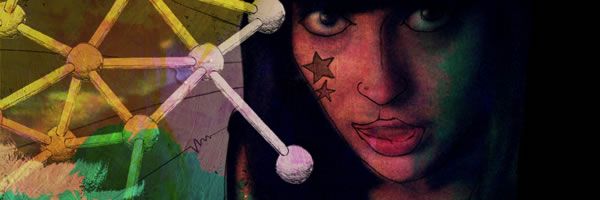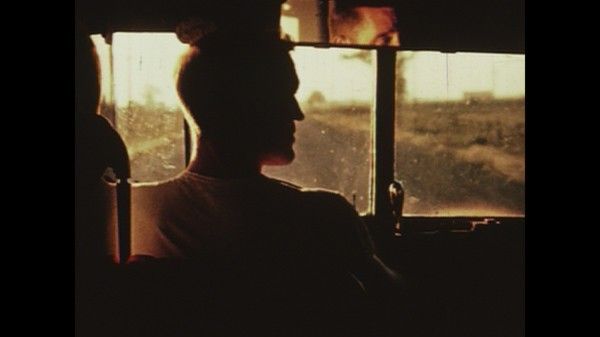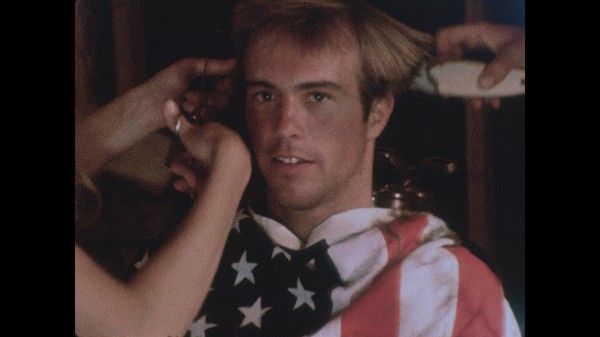Did you know that people in the 60s dropped acid and it was a really popular time for the psychedelic drug? I did and most likely you did too. Magic Trip follows the road trip of author Ken Kesey and his “Merry Band of Pranksters” as they drove across America and did lots of drugs. What was gleamed from this grand experience? Did they better understand the heart of America during the 1960s? Did they learn the strengths and limitations of the counterculture movement? Did they uncover any truths about themselves? The answer to all of these questions is “No.” They did, however, discover that doing loads of psychedelic drugs is awesome. Not surprisingly, watching the home movies of a group of uninteresting, self-serving quasi-hippies while they regale you with stories of their 1964 summer vacation isn’t fascinating, insightful, or rewarding.
In the aftermath of the Kennedy assassination and with the coming of the World’s Fair to New York, Ken Kesey decided to assemble a group of friends and travel across the U.S. while doing loads of LSD. Kesey had first been exposed to the drug during his time at Stanford when it was being used in experiments whose stated purpose was to study its affect on anxiety and depression (it was actually being studied by the CIA as possible interrogation tool). In the film’s best scene, co-directors Alex Gibney and Alison Ellwood craft a bravura animation sequence set to Kesey’s recording of himself while he was high out of his mind on acid. Kesey was a true believer in the power of the drug and saw himself as an explorer on a new wave of consciousness.
And since explorers usually don’t go solo, he brought along a group of friends who we never really get to know. We’re never really told about how most of the “Merry Pranksters” were connected to Kesey or why they chose to sign up for this psychedelic journey. Aside from Kesey, the group’s most notable member was Neal Cassady who was the basis for Dean Moriarty in Jack Kerouac’s novel On the Road. The group (or at least the men) dressed themselves up in red, white, and blue in order to celebrate America, but like almost everything they seem to do, it seems more like a celebration of themselves. They bought a school bus, painted it up with psychedelic patterns and colors, and named the bus “Further”. Once the trip begins, everyone gets little nicknames (e.g. “Stark Naked”, “Zonker”) and then they shot a bunch of footage even though no one knew how to use a camera or sound equipment.
The result is a compilation of the video mashed with voice-over audio (it was never recorded in sync) as well as the surviving Pranksters talking off-camera about their non-adventure. The big problem with the celebration of the gang’s partying is that it can never properly be conveyed through cinema and in fact, the objective camera shows them for what they truly are. In one scene, one of the Pranksters recalls how during a trip, she went into slimy water and felt that the algae was calling to her and pulling her deeper into their world. The film sets this narration against a beautiful image of a submerged camera in vibrant blue water. Then we cut back to the actual footage and see a chick covered in slime. Despite their attempts to explain a transcendent experience, it always comes up short and the closest the film comes to conveying the psychedelic experience is when it animates Kesey’s recording of his first trip on LSD.
Kesey and the Pranksters remark that they “were too young to be beatniks and too old to be hippies.” They also weren’t eloquent enough to be beatniks and not politically conscious enough to be hippies. Ultimately, the group comes away looking like a gang that was conscious of their image, but never to its meaning. Despite the turbulence of the times, they weren’t activists. The Pranksters were eye-catching, but not noteworthy because they didn’t affect any change or even attempt to. While they want to claim they were responsible for rise in LSD use in America, there’s no conclusive evidence that they were founders of any real movement that wouldn’t have come about naturally on its own during a time when use of many different drugs were becoming prevalent. Why should Kesey get more attention than any other group of acid-trippers of the 1960s? Because he was a literary star and had a sweet ride.
At its best, Magic Trip is nothing more than a vivid historical snapshot of a small group of people engaging in drug-related activities during the summer of 1964. Unfortunately, it’s a photo we’ve all seen many times before.
Rating: D+
For all of our coverage of the 2011 Sundance Film Festival, click here.



